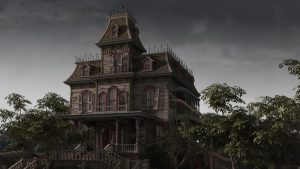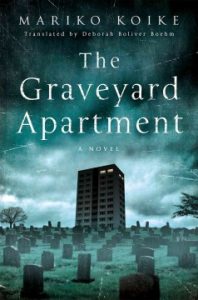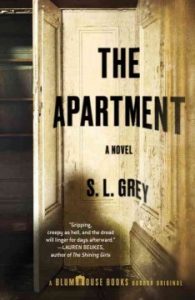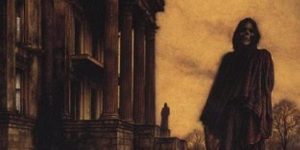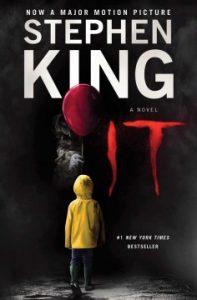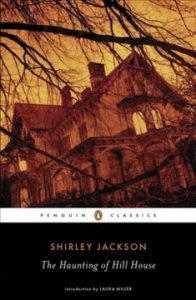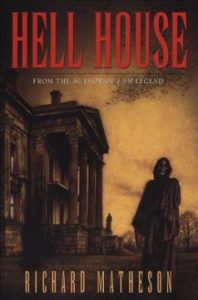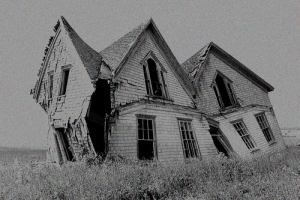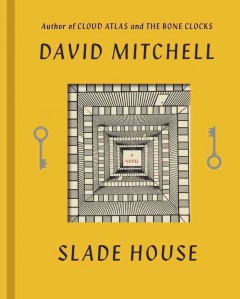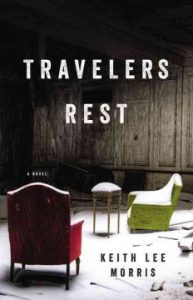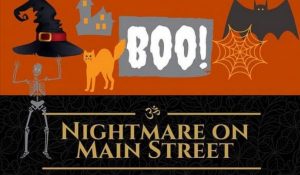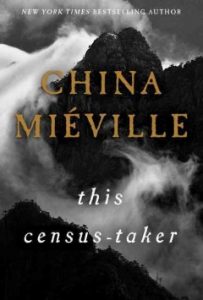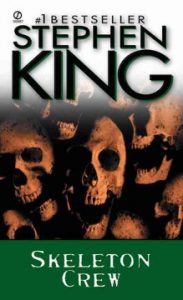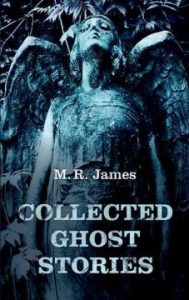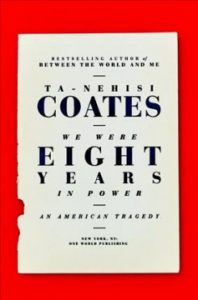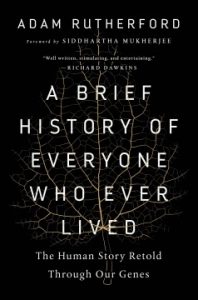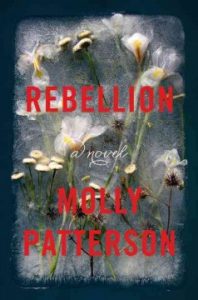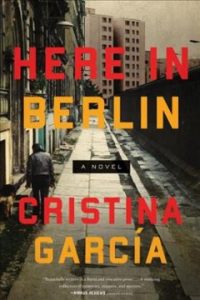Happy Friday, dear readers! If you’re looking for a fun adventure this weekend, be sure to check out the Boston Book Festival, a glorious weekend of book-loving, book-buying, and book-discussing! It’s all taking place in Copley Square, and the line-up of authors this year is really impressive, diverse, exciting, and engaging. You can get all the details at their website: http://bostonbookfest.org/
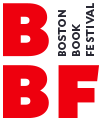
And if that isn’t enough books for you for one weekend, then feel free to check out these books (and many others!) that gamboled onto our shelves this week!

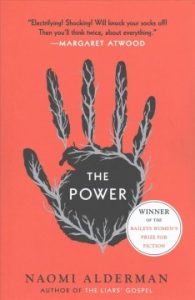
The Power: The winner of this year’s Baileys Women’s Prize for Fiction has at last arrived, both on our shores, and on our shelves! This is a book that is both outlandish and challenging–but Naomi Alderman possess a phenomenal talent for making the world of her book feel normal, believable–and all the most chilling for it. In this story, Alderman creates a world that looks remarkably like ours, with a wealth of intricate characters from around the globe, whose lives converge when a vital new force takes root and flourishes: Teenage girls now have immense physical power–they can cause agonizing pain and even death. And, with this small twist of nature, the world drastically resets. This is a book is as much about our own world as that of the world that Alderman has created, and offers plenty of commentary on the state of gendered and age power structures. Perhaps my favorite part of the whole thing is the correspondence that frame the main book, which highlights in painful clarity the language we use in talking about women, and how absurd it is taken out of context. The Boston Globe‘s review echoed this sentiment, saying, “Alderman has conducted a brilliant thought experiment in the nature of power itself…Turning the world inside out, she reveals how one of the greatest hallmarks of power is the chance to create a mythology around how that power was used. In that sense, The Power is a testament to its own force – it begins and ends in the voice of the author herself – as if to say, lightning would be nice, but for now – and here – there’s the pen. It can do a lot.”
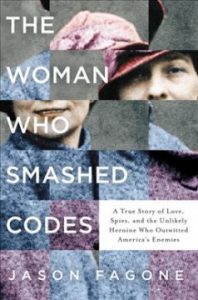
The Woman Who Smashed Codes: In 1916, at the height of World War I, brilliant Shakespeare expert Elizebeth Smith went to work for an eccentric tycoon on his estate outside Chicago. The tycoon had close ties to the U.S. government, and he soon asked Elizebeth to apply her language skills to an exciting new venture: code-breaking. There she met the man who would become her husband, groundbreaking cryptologist William Friedman. Though she and Friedman are in many ways the “Adam and Eve” of the NSA, Elizebeth’s story has always been overshadowed by William’s…until now. In this well-researched and very well-told story, Jason Fagone presents Elizebeth’s life, her genius, and the real import of her work, bringing into focus the unforgettable events and colorful personalities that would help shape modern intelligence. Fans of Hidden Figures are sure to find plenty to enjoy here! Booklist gave Fagone’s work a starred review, too, hailing it as “Riveting, inspiring, and rich in colorful characters, Fagone’s extensively researched and utterly dazzling title is popular history at its very best and a book club natural.”
 Death in the Air: the true story of a serial killer, the great London smog, and the strangling of a city: Fans of Erik Larson and David King should not waste a minute in checking out Kate Winkler Dawson’s fascinating and unsettling history of the deadliest air pollution disaster in world history…and the murderer who worked alongside it. In winter 1952, London automobiles and thousands of coal-burning hearths belched particulate matter into the air. But the smog that descended on December 5th of 1952 was different; it was a type that held the city hostage for five long days. Mass transit ground to a halt, criminals roamed the streets, and 12,000 people died. That same month, there was another killer at large in London: John Reginald Christie, who murdered at least six women. In a braided narrative that draws on extensive interviews, never-before-published material, and archival research, Dawson captivatingly recounts the intersecting stories of the these two killers and their longstanding impact on modern history. Authors from Douglas Preston to Simon Winchester have written blurbs for this all-around winner of a book, with the latter providing a poignant reminder of how close to these events we still are, and what a rare gift it is to be able to discuss such events in an insightful way. He writes: “I was seven, and living in London, when these two dreadful and murderous events uncoiled, and I–asthmatic as a result–remember them still. It seems to me that only an outsider, a non-Londoner, could possibly bring them so vividly, so excruciatingly and so unflinchingly back to life. Kate Winkler Dawson has done the history of my city a great service, and she is to be commended for telling a terrible tale memorably and brilliantly.”
Death in the Air: the true story of a serial killer, the great London smog, and the strangling of a city: Fans of Erik Larson and David King should not waste a minute in checking out Kate Winkler Dawson’s fascinating and unsettling history of the deadliest air pollution disaster in world history…and the murderer who worked alongside it. In winter 1952, London automobiles and thousands of coal-burning hearths belched particulate matter into the air. But the smog that descended on December 5th of 1952 was different; it was a type that held the city hostage for five long days. Mass transit ground to a halt, criminals roamed the streets, and 12,000 people died. That same month, there was another killer at large in London: John Reginald Christie, who murdered at least six women. In a braided narrative that draws on extensive interviews, never-before-published material, and archival research, Dawson captivatingly recounts the intersecting stories of the these two killers and their longstanding impact on modern history. Authors from Douglas Preston to Simon Winchester have written blurbs for this all-around winner of a book, with the latter providing a poignant reminder of how close to these events we still are, and what a rare gift it is to be able to discuss such events in an insightful way. He writes: “I was seven, and living in London, when these two dreadful and murderous events uncoiled, and I–asthmatic as a result–remember them still. It seems to me that only an outsider, a non-Londoner, could possibly bring them so vividly, so excruciatingly and so unflinchingly back to life. Kate Winkler Dawson has done the history of my city a great service, and she is to be commended for telling a terrible tale memorably and brilliantly.”
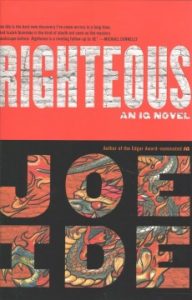 Righteous: Fans of Joe Ide’s debut mystery, IQ, should definitely check out this follow-up story featuring the compelling Isaiah Quintabe. Ten years ago, when Isaiah was just a boy, his brother was killed by an unknown assailant. The search for the killer sent Isaiah plunging into despair and nearly destroyed his life. Even with a flourishing career, a new dog, and near-iconic status as a PI in his hometown, East Long Beach, he has to begin the hunt again-or lose his mind. But at the same time, I.Q. and his volatile, dubious sidekick, Dodson find themselves plunged into a case featuring Chinese gangsters, a terrifying seven-foot-tall loan shark, and a case that threatens not only I.Q. and Dodson, but the love of I.Q.’s life, as well. This series is a hit with fans, critics, and other mystery writers alike, with its gritty scenarios, trash-talking characters, and the deep emotionality that Ide brings to the hardest of hard-boiled characters’ interactions. Publisher’s Weekly gave this case a starred review, declaring it “Outstanding . . . Ide again makes his hero’s deductive brilliance plausible, while presenting an emotionally engaging story that doesn’t shy away from presenting the bleakest aspects of humanity.”
Righteous: Fans of Joe Ide’s debut mystery, IQ, should definitely check out this follow-up story featuring the compelling Isaiah Quintabe. Ten years ago, when Isaiah was just a boy, his brother was killed by an unknown assailant. The search for the killer sent Isaiah plunging into despair and nearly destroyed his life. Even with a flourishing career, a new dog, and near-iconic status as a PI in his hometown, East Long Beach, he has to begin the hunt again-or lose his mind. But at the same time, I.Q. and his volatile, dubious sidekick, Dodson find themselves plunged into a case featuring Chinese gangsters, a terrifying seven-foot-tall loan shark, and a case that threatens not only I.Q. and Dodson, but the love of I.Q.’s life, as well. This series is a hit with fans, critics, and other mystery writers alike, with its gritty scenarios, trash-talking characters, and the deep emotionality that Ide brings to the hardest of hard-boiled characters’ interactions. Publisher’s Weekly gave this case a starred review, declaring it “Outstanding . . . Ide again makes his hero’s deductive brilliance plausible, while presenting an emotionally engaging story that doesn’t shy away from presenting the bleakest aspects of humanity.”
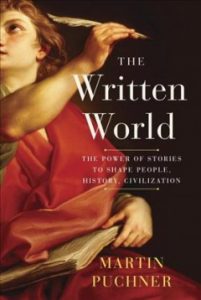 The Written World: What is better than a book? A book about books! In this groundbreaking book, Martin Puchner leads us on a remarkable journey through time and around the globe to reveal the powerful role stories and literature have played in creating the world we have today. Puchner introduces us to numerous visionaries as he explores sixteen foundational texts selected from more than four thousand years of world literature and reveals how writing has inspired the rise and fall of empires and nations, the spark of philosophical and political ideas, and the birth of religious beliefs. Indeed, literature has touched the lives of generations and changed the course of history. From the Epic of Gilgamesh to Harry Potter, Puchner’s delightful narrative also chronicles the inventions—writing technologies, the printing press, the book itself—that have shaped religion, politics, commerce, people, and history, making this a book that history buffs, techno-geeks, and book lovers alike will savor. Any time Margaret Atwood composes a Tweet to your book, it’s a good day, and this tweet says it all: “Well worth a read, to find out how come we read.”
The Written World: What is better than a book? A book about books! In this groundbreaking book, Martin Puchner leads us on a remarkable journey through time and around the globe to reveal the powerful role stories and literature have played in creating the world we have today. Puchner introduces us to numerous visionaries as he explores sixteen foundational texts selected from more than four thousand years of world literature and reveals how writing has inspired the rise and fall of empires and nations, the spark of philosophical and political ideas, and the birth of religious beliefs. Indeed, literature has touched the lives of generations and changed the course of history. From the Epic of Gilgamesh to Harry Potter, Puchner’s delightful narrative also chronicles the inventions—writing technologies, the printing press, the book itself—that have shaped religion, politics, commerce, people, and history, making this a book that history buffs, techno-geeks, and book lovers alike will savor. Any time Margaret Atwood composes a Tweet to your book, it’s a good day, and this tweet says it all: “Well worth a read, to find out how come we read.”

 There are aspects of this story that are certainly dated, not the least of which is the “magical thing that comes from a faraway part of the Empire to destroy British people” trope. It’s a theme that pops up everywhere in Sherlock Holmes stories, it was the basis for Wilkie Collins’ The Moonstone, it’s the main premise of Dracula…safe to say, it’s a well-worn theme that helped create the idea of the “other”–a figure that was frightening and dangerous and needed to be controlled. And we should recognize that. On the other hand, this story is still read, and still shared, because it is wonderfully constructed, finely wrought, and genuinely unsettling. It is a perfect embodiment of the old maxim “be careful what you wish for”, but without feeling pedantic or rehashed. Jacobs’ talents as a humorous shine through in places, as well, helping him create characters who are sympathetic and real, even down to their inability to play a good game of chess. And it’s that connection to these people, and this ability to relate to them, even when they make the most dire of mistakes, that makes this story such an effective–and affecting–one.
There are aspects of this story that are certainly dated, not the least of which is the “magical thing that comes from a faraway part of the Empire to destroy British people” trope. It’s a theme that pops up everywhere in Sherlock Holmes stories, it was the basis for Wilkie Collins’ The Moonstone, it’s the main premise of Dracula…safe to say, it’s a well-worn theme that helped create the idea of the “other”–a figure that was frightening and dangerous and needed to be controlled. And we should recognize that. On the other hand, this story is still read, and still shared, because it is wonderfully constructed, finely wrought, and genuinely unsettling. It is a perfect embodiment of the old maxim “be careful what you wish for”, but without feeling pedantic or rehashed. Jacobs’ talents as a humorous shine through in places, as well, helping him create characters who are sympathetic and real, even down to their inability to play a good game of chess. And it’s that connection to these people, and this ability to relate to them, even when they make the most dire of mistakes, that makes this story such an effective–and affecting–one.







